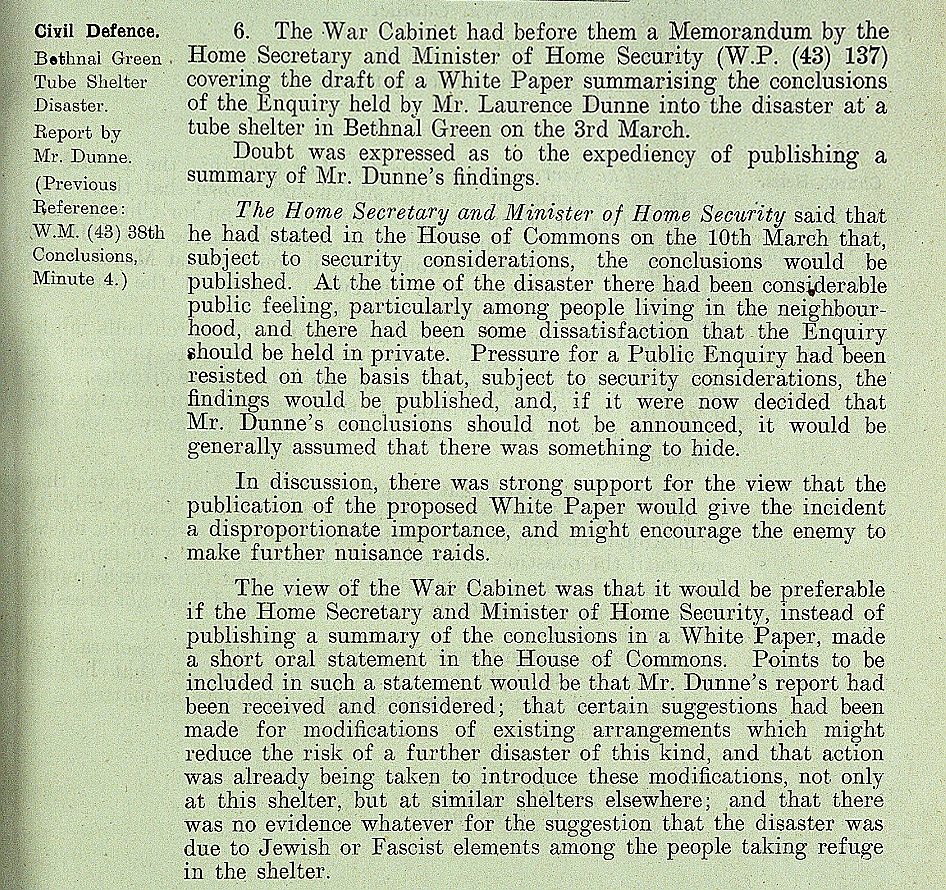
Extract from War Cabinet Minutes referring to the Bethnal Green Tube Shelter disaster, 1943, Catalogue ref: CAB 65/34
Railway arches and basements were also used and, in London, people slept at night in the Underground Stations and tunnels. The shelters – big and small – saved the lives of very many people, but there were deaths when large bombs fell directly on shelters. In some cases, many people were killed at once – for example, 64 died at Balham Underground Station when it took a direct hit on 15 October 1940.
Transcript
Civil Defence.
Bethnal Green Tube Shelter Disaster.
Report by Mr. Dunne.
(Previous Reference: W.M. (43) 38th Conclusions, Minute 4.)
6. The War Cabinet had before them a Memorandum by the Home Secretary and Minister of Home Security (W.P. (43) 137) covering the draft of a White Paper summarising the conclusions of the Enquiry held by Mr. Laurence Dunne into the disaster at a tube shelter in Bethnal Green on the 3rd March.
Doubt was expressed as to the expediency of publishing a summary of Mr. Dunne’s findings.
The Home Secretary and Minister of Home Security said that he had stated in the House of Commons on the 10th March that, subject to security considerations, the conclusions would be published. At the time of the disaster there had been considerable public feeling, particularly among people living in the neighbourhood, and there had been some dissatisfaction that the Enquiry should be held in private. Pressure for a Public Enquiry had been resisted on the basis that, subject to security considerations, the findings would be published, and if it were now decided that Mr. Dunne’s conclusions should not be announced, it would be generally assumed that there was something to hide.
In discussion, there was strong support for the view that the publication of the proposed White Paper would give the incident a disproportionate importance, and might encourage the enemy to make further nuisance raids.
The view of the War Cabinet was that it would be preferable if the Home Secretary and Minister of Home Security, instead of publishing a summary of the conclusions in a White Paper, made a short oral statement in the House of Commons. Points to be included in such a statement would be that Mr. Dunne’s report had been received and considered; that certain suggestions had been made for modifications of existing arrangements which might reduce the risk of a further disaster of this kind, and that action was already being taken to introduce these modifications, not only at this shelter, but at similar shelters elsewhere; and that there was no evidence whatever for the suggestion that the disaster was due to Jewish or Fascist elements among the people taking refuge in the shelter.
